Bosón Higgs, are you there?
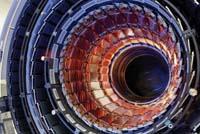
But the Higgs boson goes from word to mouth among physicists. The LHC accelerator will generate (or can generate) the energy needed to detect the boson, which is a great hope. The Higgs boson is expected to appear and the origin of the mass is explained.
Standard model standard model
The question is why physicists believe that there is the Higgs boson if they have never seen it. It is true that they have never seen it, but it is also true that they do not have to see a particle to realize its existence. It is like the wind: the wind is not seen, but when we see the branches of the moving trees we know that there is wind. And its characteristics (speed, direction, etc.) They can be measured.
In the case of the Higgs boson there is nothing as simple as the branches of the trees. It is a particle announced by an error of a great theory. This great theory is a standard model that commands the physics of particles. It is similar to the periodic table of chemistry elements, but it is that of subatomic particles. It commands the particles in three families, giving them physical sense.
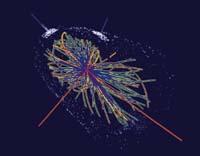
It is not a perfect theory, since it only encompasses three of the four fundamental forces that exist in the universe: the model explains the weak electromagnetic, violent nuclear and nuclear force, but the force of gravity does not enter that theory. However, the standard model is a very good theory from the point of view of the physics of small particles. In addition to presenting existing particles, it allows predicting interactions between particles. Specifically, the results of the experiments carried out in accelerators based on the standard model are designed.
However, the standard model has a big problem: it does not predict particle mass. And physicists know that many particles have mass, of course. Electrons, protons and neutrons, for example, have mass; all quarks also have it, since they form protons and neutrons. Many others do not, like the photon. However, according to the classic standard model, all particles are free of mass and move at the speed of light.
Theory of Higgs
Without being able to explain the mass, physicists in critical situation XX. In the mid-twentieth century. The theory was very good to understand the particles found, but it did not explain the mass of the particles. It was essential to take this error into account and correct it.

This theory implies that all particles are included in an area, that of Higgs. This supposed area has a special character, since some particles move inside the area without any kind of obstacles and others not, because they have an interaction with the area.
It would be like people passing through a corn. The maize plants are planted in lines, so if they move in different directions, the walker has no obstacles to advance. But if the angle of the path changes a little, that is, if it moves in some way, it will collide continuously with the corn plants. The Higgs area for particles would be the same as for walkers: some particles move without obstacles and others collide with the area.
The example can serve to understand the concept of zone, but it should be noted that the Higgs field is not something that influences spatially. On the contrary, it serves to explain the interaction between the particles and the area. Particles that do not interact move at the speed of light and have no mass, and those that collide more slowly and have mass. For example, the photon moves unhindered in the area of Higgs, moves unhindered in the area of Higgs and the electron does not.
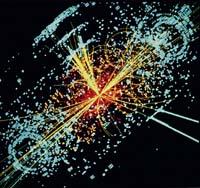
An area, a particle
If the Higgs theory is correct, why should they look for a particle and not a field? The question is that in physics they are the same. Somehow, each type of field is transmitted through different particles. The photon transmits the electromagnetic field, which is the clearest example. And the rest of the forces are transmitted through the particles. Bosons Z and W transmit a weak nuclear force and a set of quarks transmit a violent nuclear force. In turn, the area of Higgs is transmitted by a particle. According to the theory, this particle is a boson, so to detect it is called Higgs boson.
In the end, if they find the boson, they will discover the field and the theoretical mechanism that gives mass to the particles will be confirmed.
The theory has also announced the characteristics of this boson. If it exists, it needs a heavy particle. This means that the impact to detect this particle is very energetic. There are, therefore, two accelerators in the world to carry out an experiment of this type: Tevatron and the prestigious LHC that is now underway.
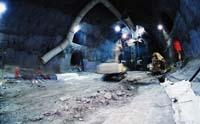
What if it does not exist?
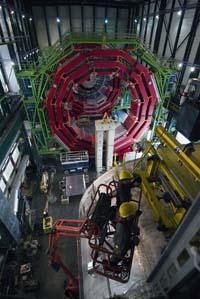
In the end, Europe could detect the Higgs boson. Or the United States. Or Americans with the European accelerator or, who knows, with the American accelerator. The competition is open. But, of course, there is another option: let no one find the Higgs boson. So what?
It is easy to know when an existing particle has been detected, but it is very difficult to decide that this particle does not exist because it has not been detected. If they do not detect it, it could be thought that with the improvement of the experiment it will appear. Therefore, there is no end (rather, the end would be to close the source of income).
There are those who say that the Higgs boson has already appeared in several experiments, but scientists have not realized it, because they did not expect it. However, if this is true, an experiment will be easily designed to catch the Higgs boson.
And physicists may have to wait for another theory. At least one thing is clear: the mass exists and before or after they will have to explain why.

Buletina
Bidali zure helbide elektronikoa eta jaso asteroko buletina zure sarrera-ontzian











